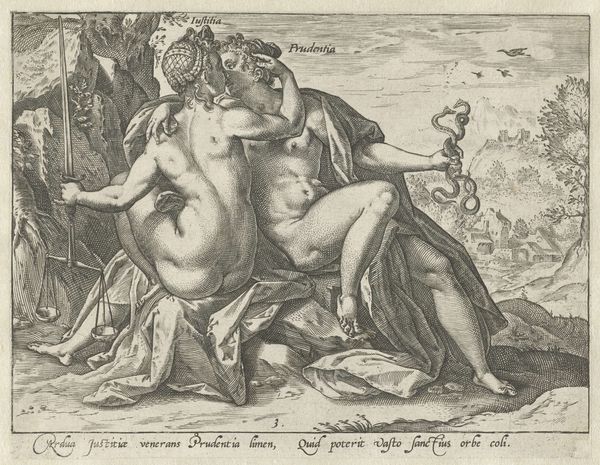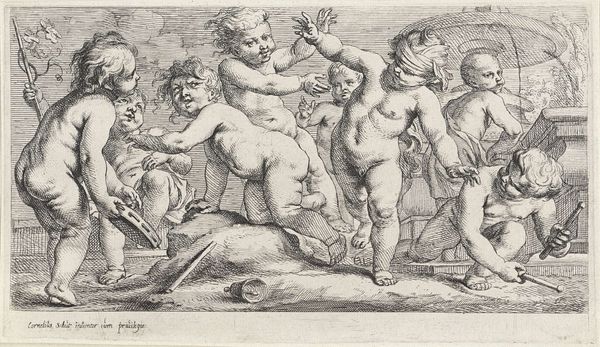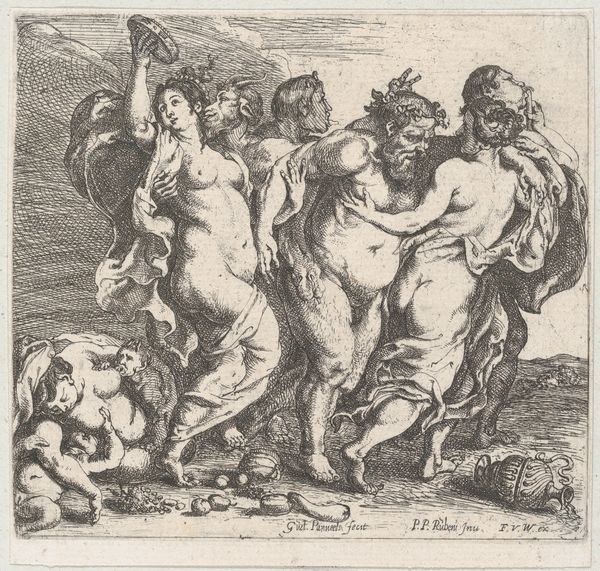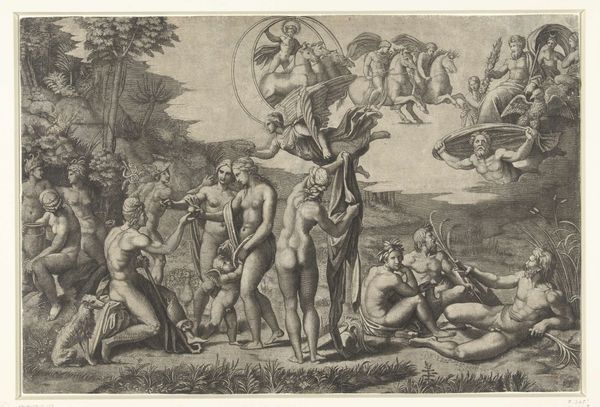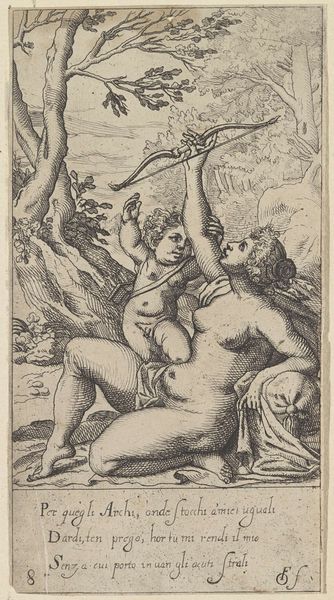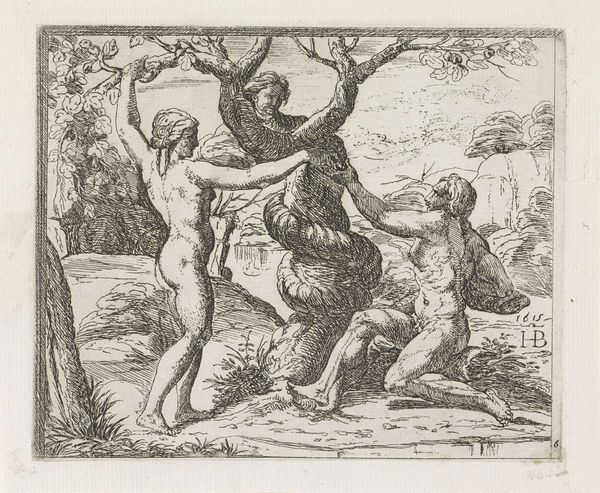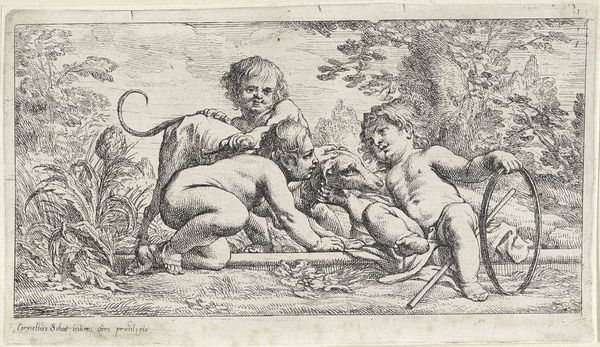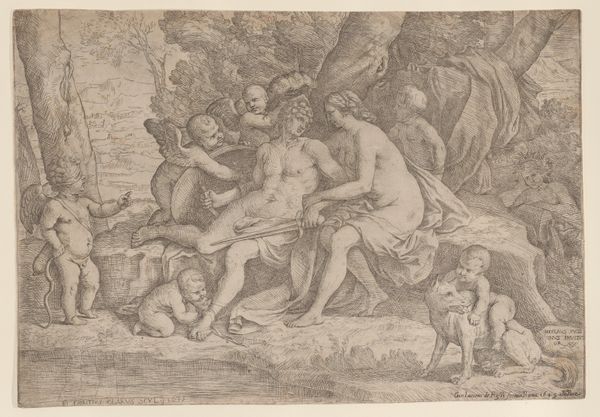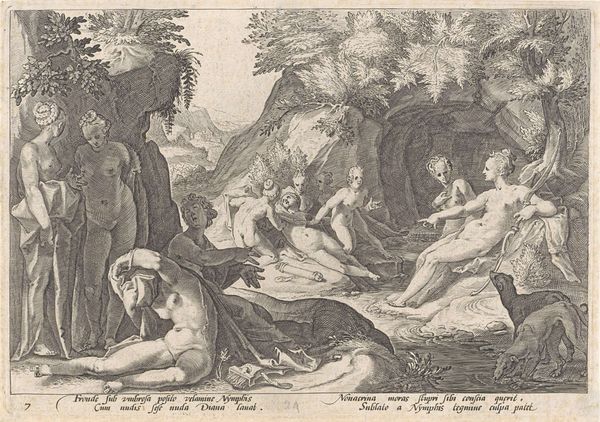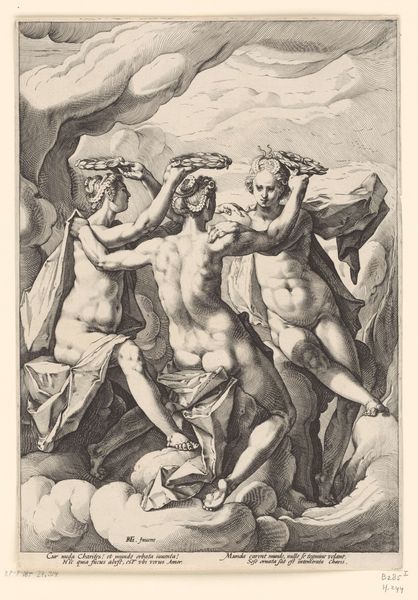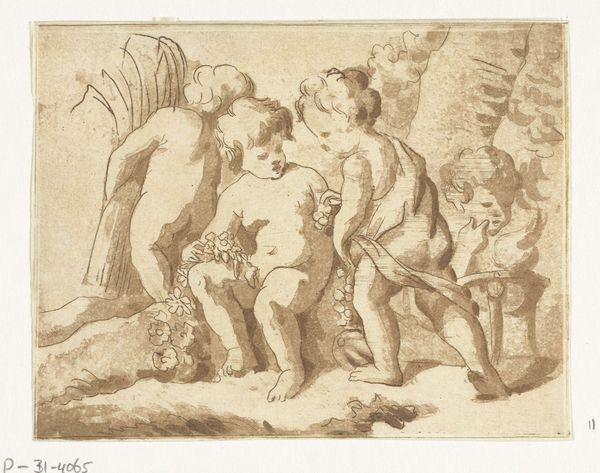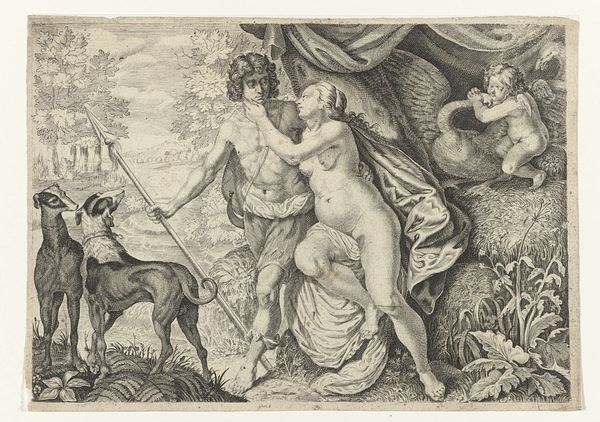
engraving
#
allegory
#
old engraving style
#
figuration
#
portrait drawing
#
northern-renaissance
#
nude
#
engraving
Dimensions: height 158 mm, width 205 mm
Copyright: Rijks Museum: Open Domain
Curator: Welcome. Today we’re looking at an engraving called "Eendracht en Vrede," or "Concordia/Pax," created by Hendrick Goltzius sometime between 1580 and 1584. It's part of the Rijksmuseum collection. Editor: Well, my first impression is that it's… intensely intimate. And a little unsettling? It's that old engraving style, all those tiny lines, but the figures are so close, almost merging. Curator: The artwork presents us with a classical allegory, right? The two figures, embodying Concord and Peace, are locked in an embrace, symbolizing unity and harmony. Editor: I get the harmony, but the embrace feels... well, loaded. It makes you think about what these concepts really ask of us – surrender? Oblivion? Curator: Consider the cultural context. Goltzius lived through a time of religious and political strife in the Netherlands. This image likely served as a powerful message advocating for reconciliation. Notice Peace holds an olive branch and Concordia supports what looks like stacked books? These details would signify their powers of prosperity through good governance. Editor: Ah, good catch, the branch, very traditional. But there is tension though—you’ve got the serene background juxtaposed with these entwined figures who seem to be both comforted and overwhelmed, that maybe reveals the true struggle that peaceful negotiation can take on humanity. Curator: Absolutely. The bodies themselves are intriguing, perhaps even unsettling to modern viewers. Their rounded forms, typical of Northern Renaissance nudes, suggest abundance and fertility, further underscoring the desired outcome of unity—a flourishing society. Editor: There’s something both honest and artificial to those bodies, to me. Like he’s showing us humanity’s fleshy desire for safety but then dressing it up in something almost unachievable: sustained concord. Even now, we use the imagery, recycle it. How many times have we hoped a symbol alone can change hearts? Curator: Symbols have a staying power. The persistence of this allegory throughout centuries reminds us that the desire for peace and unity remains a fundamental human aspiration, though its realization always is a work in progress. Editor: Right. Goltzius reminds us that the road to paradise always goes through the messy heart.
Comments
No comments
Be the first to comment and join the conversation on the ultimate creative platform.
